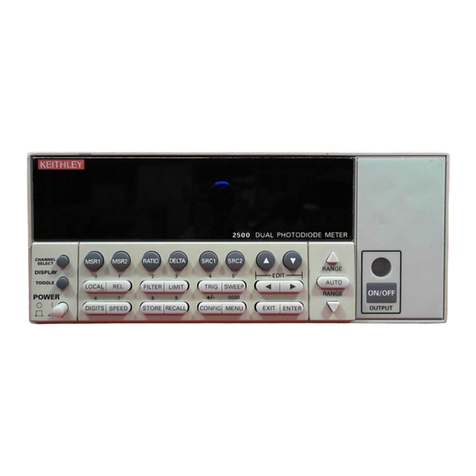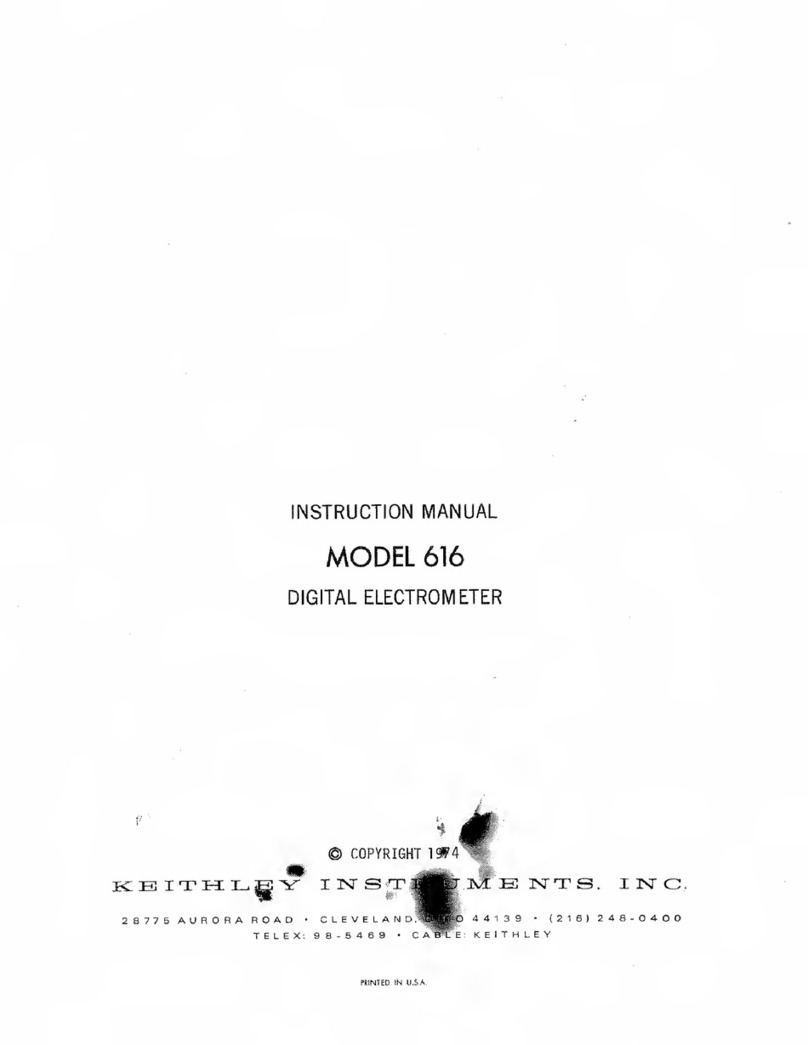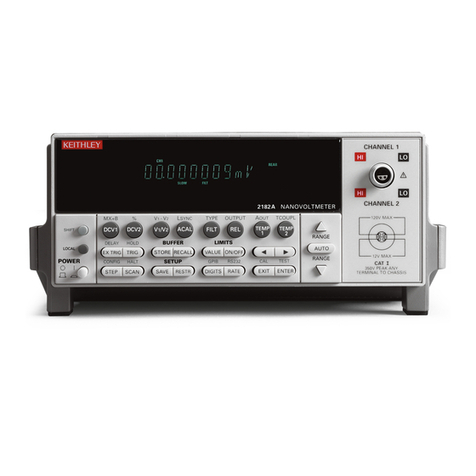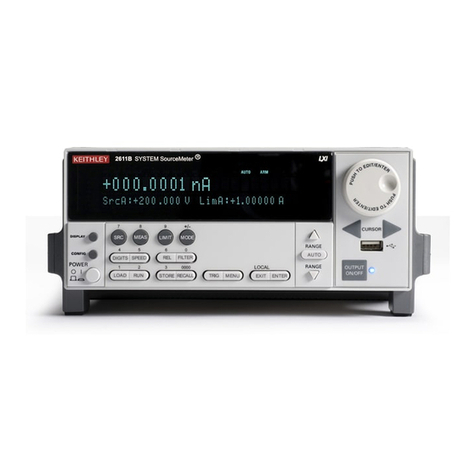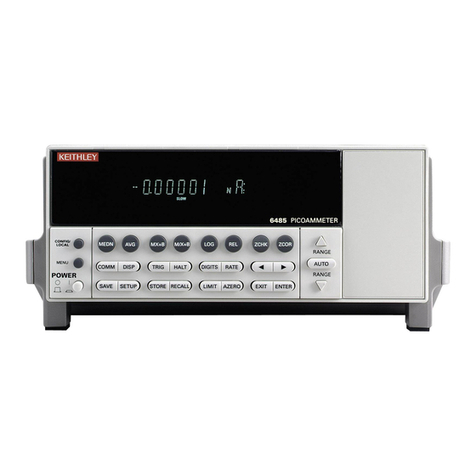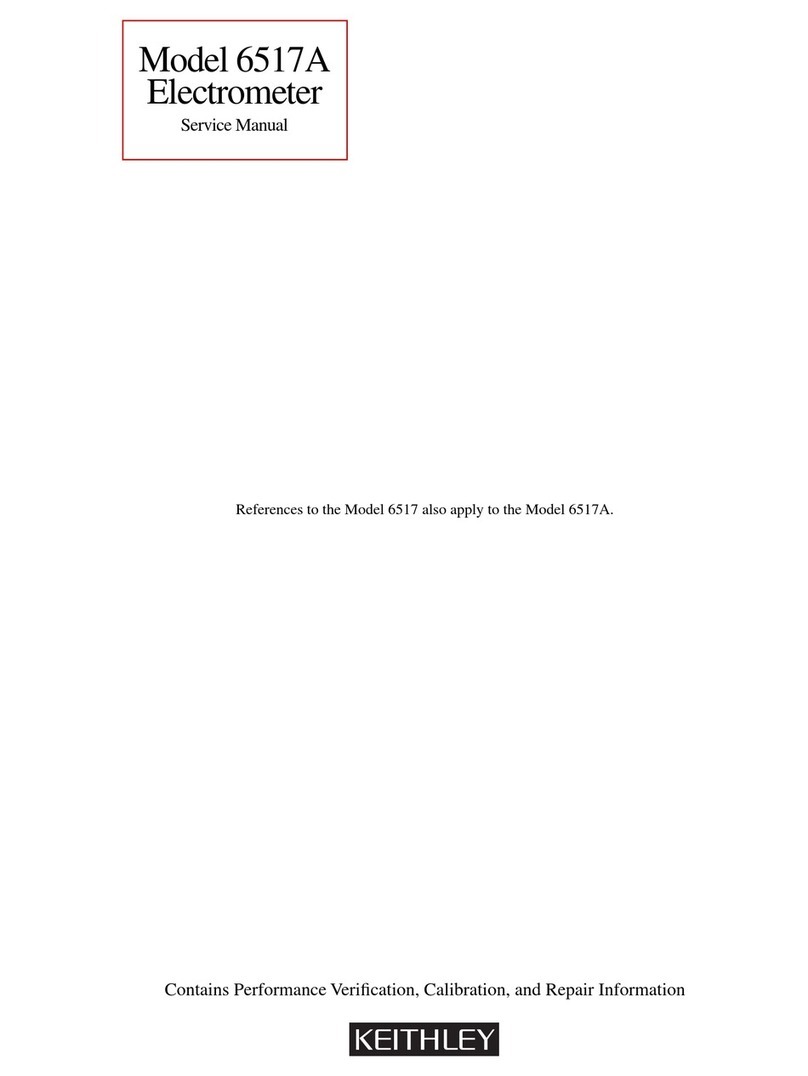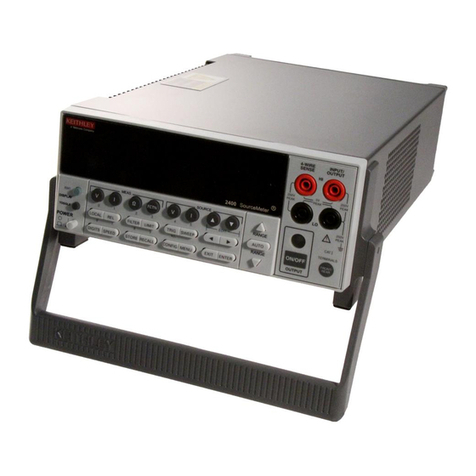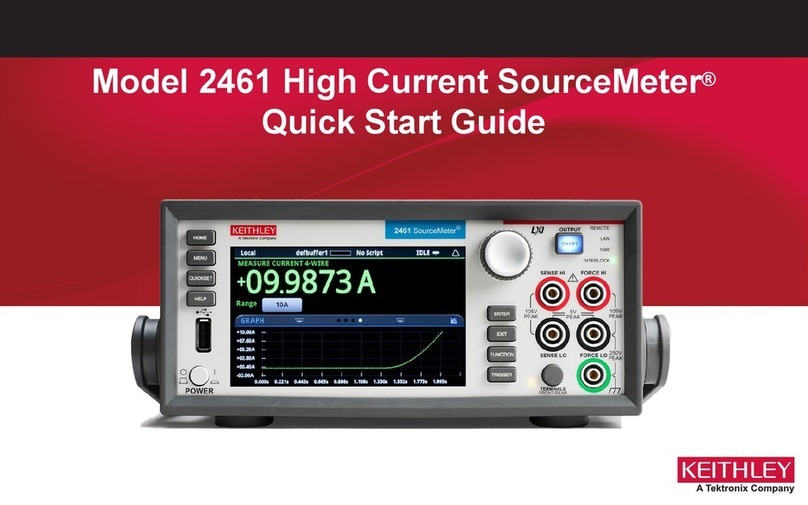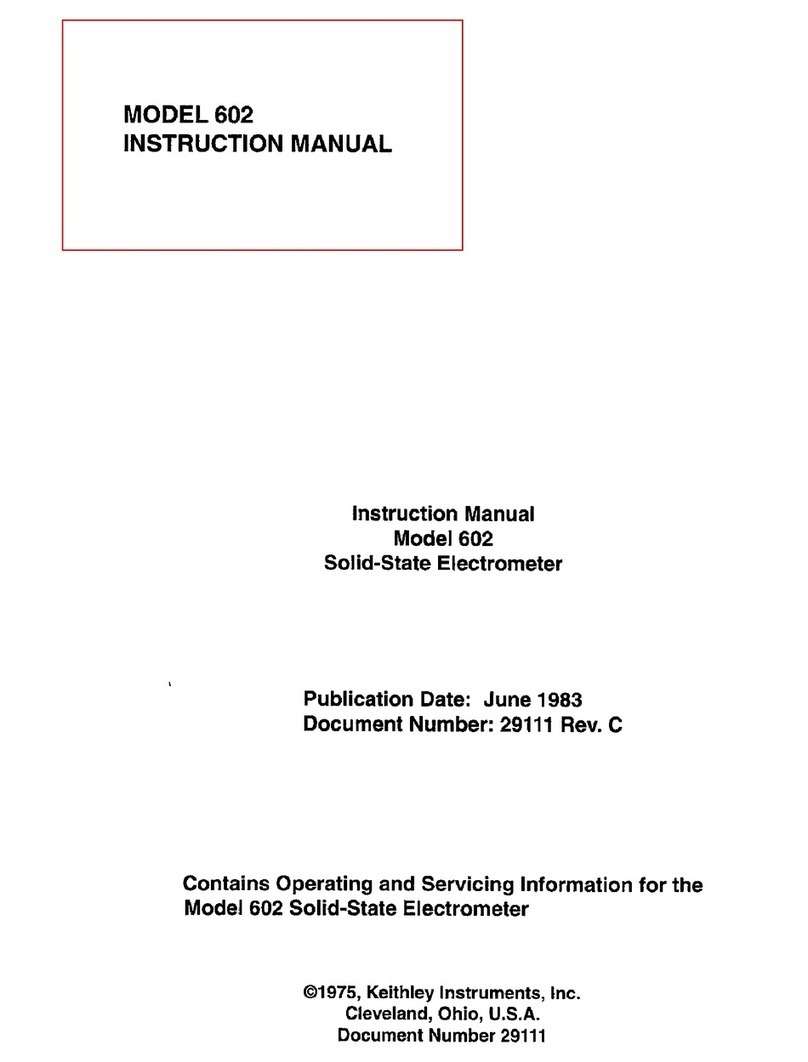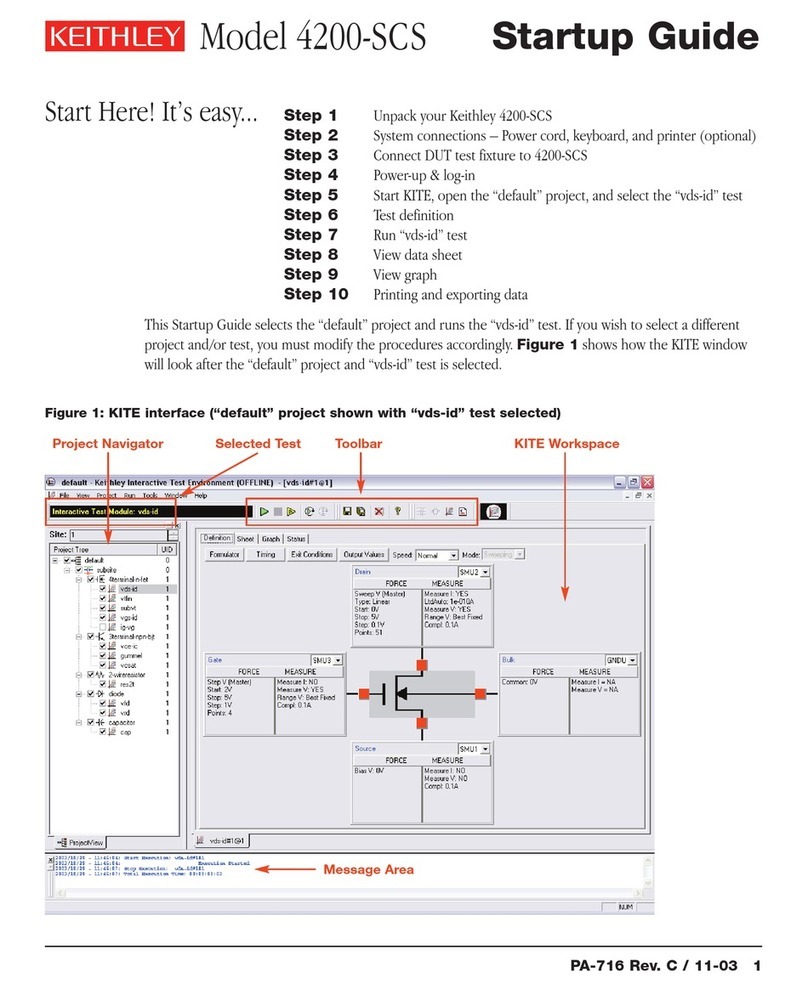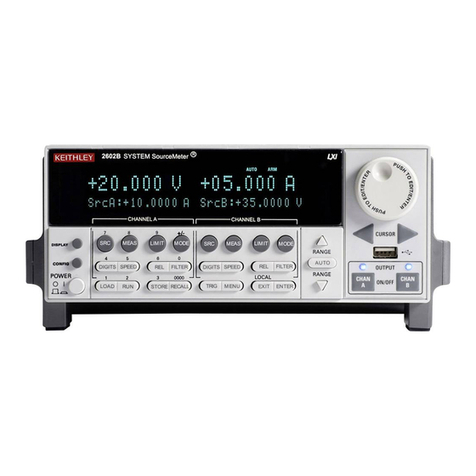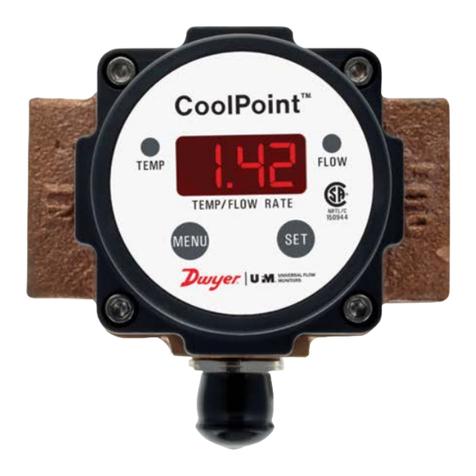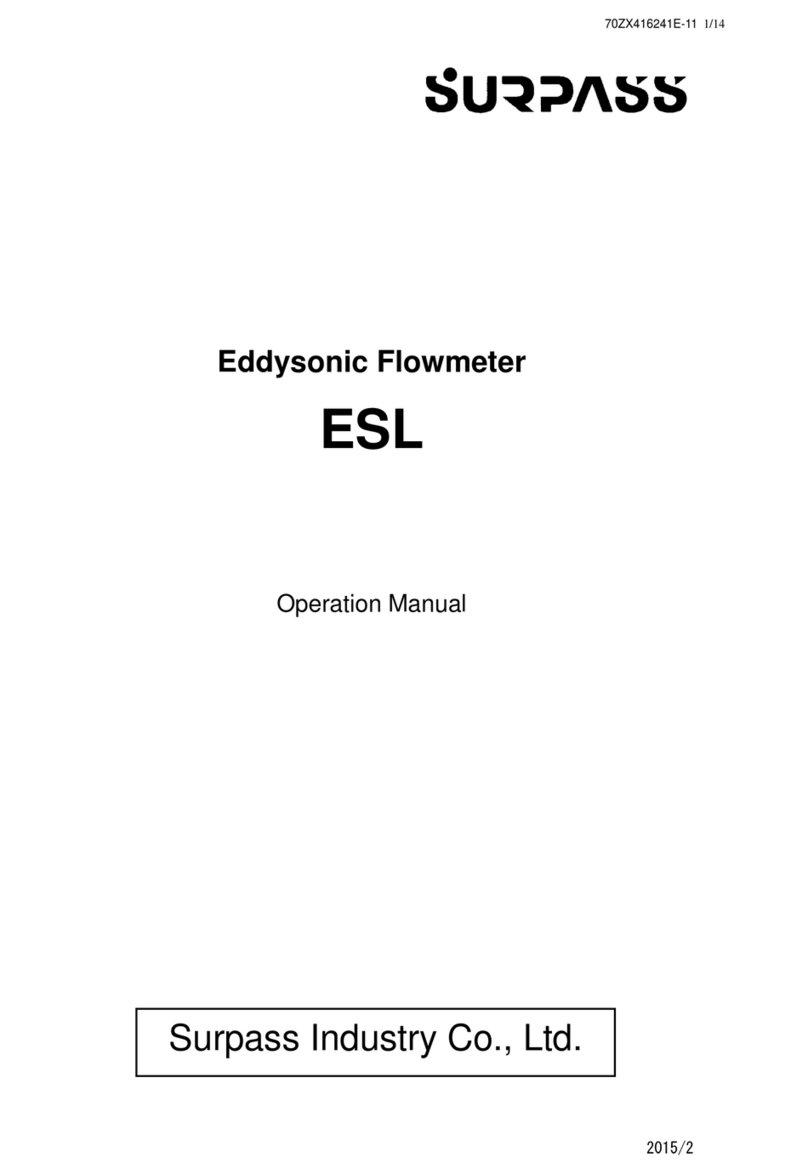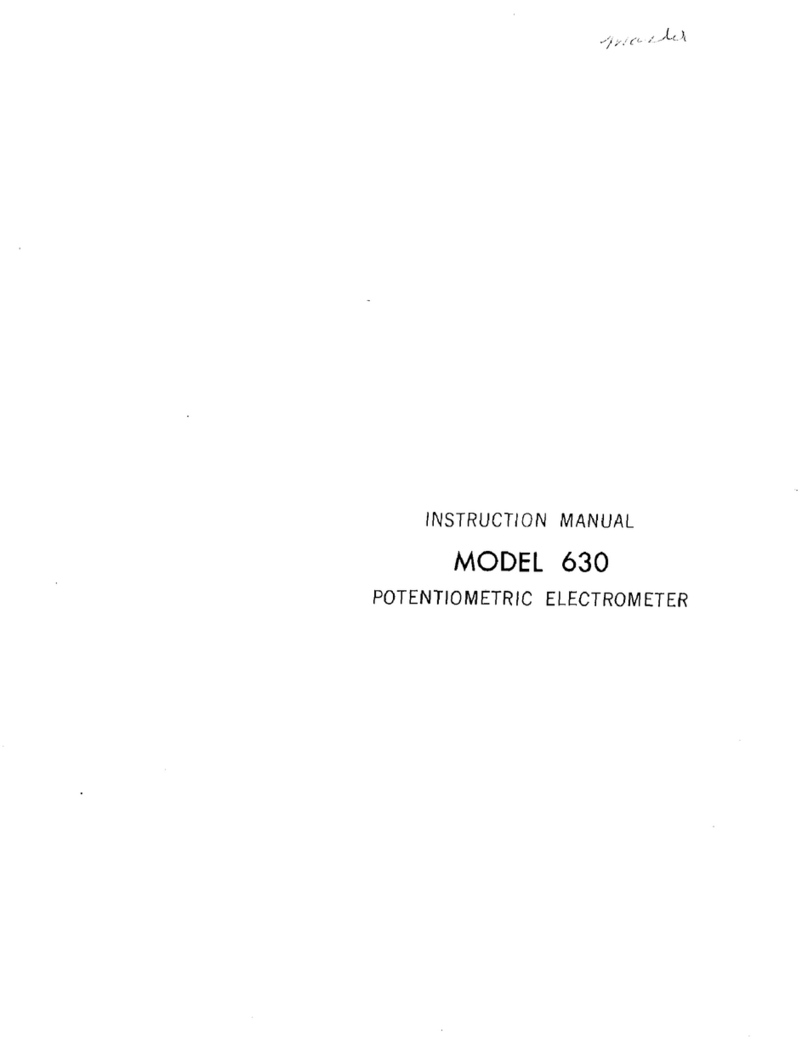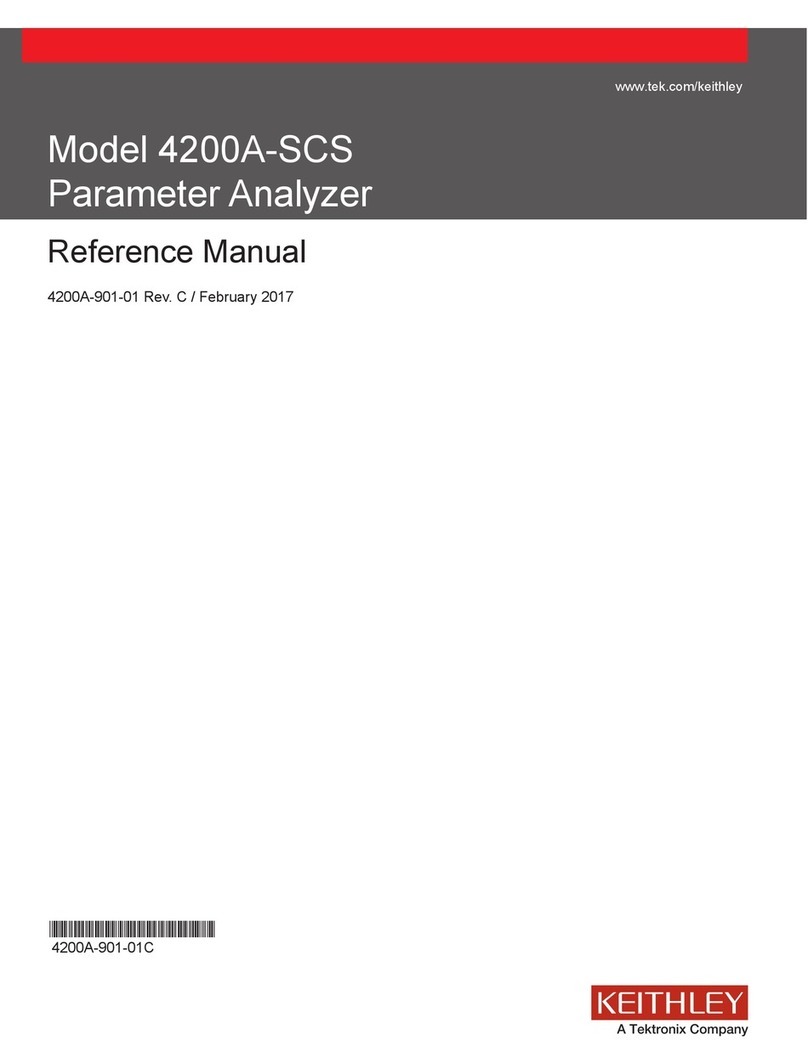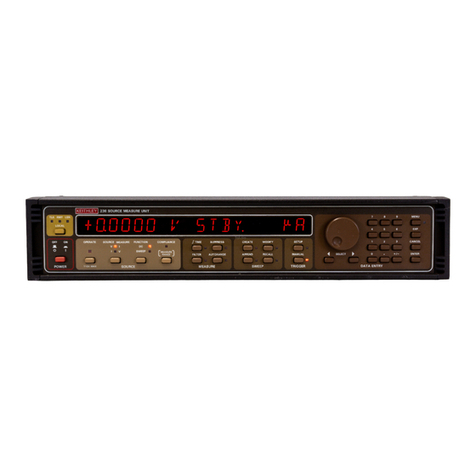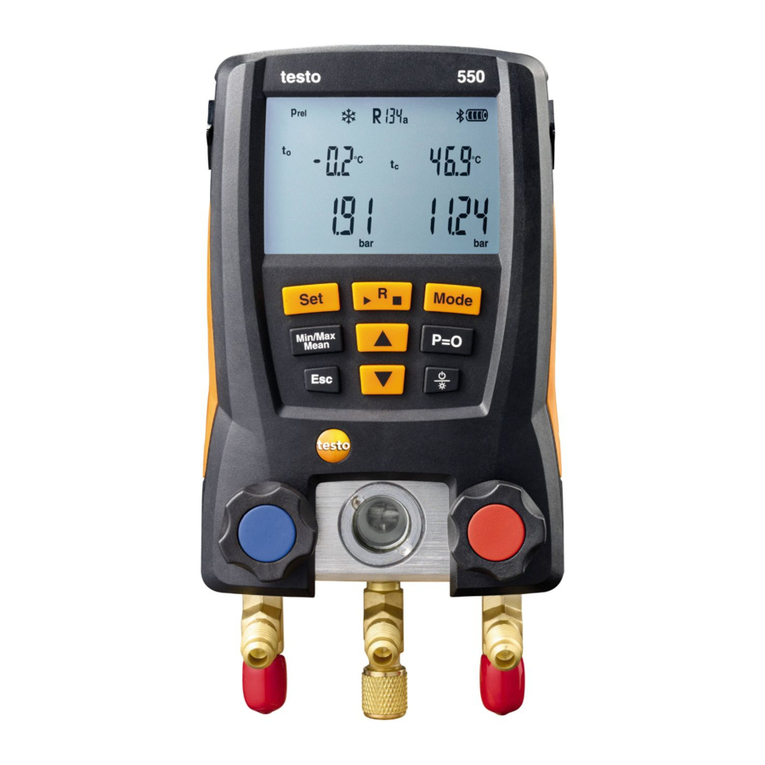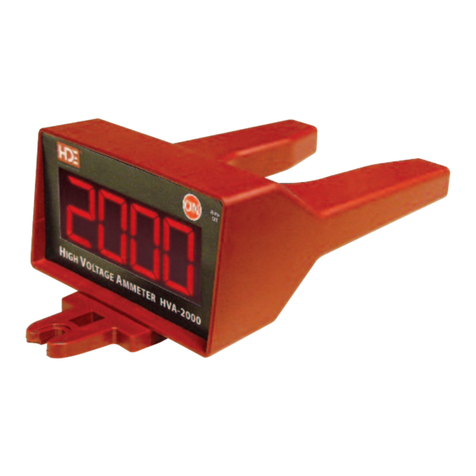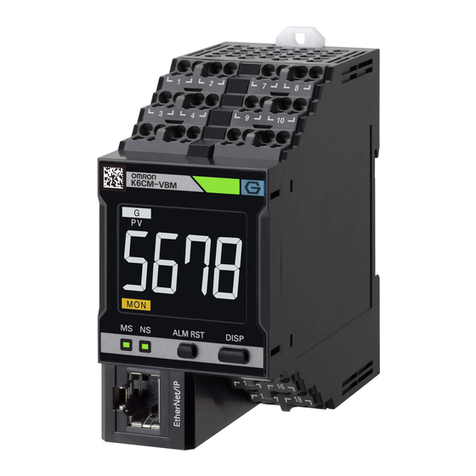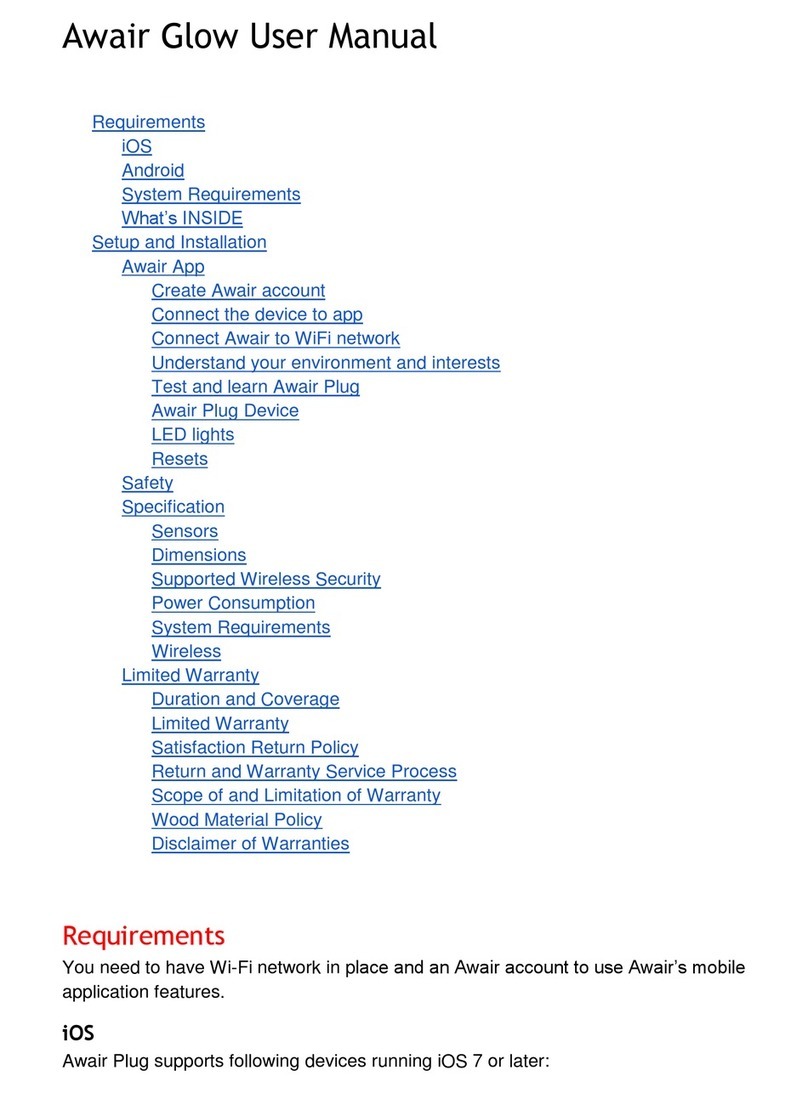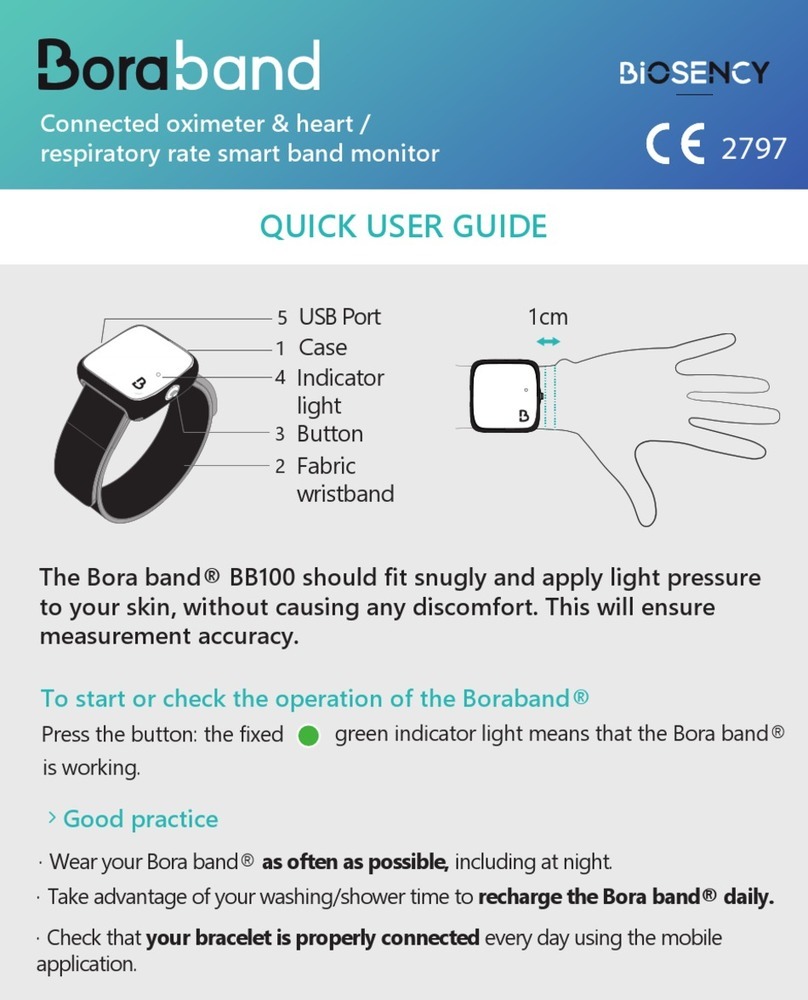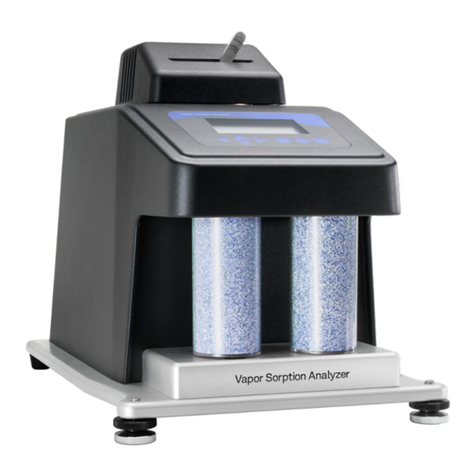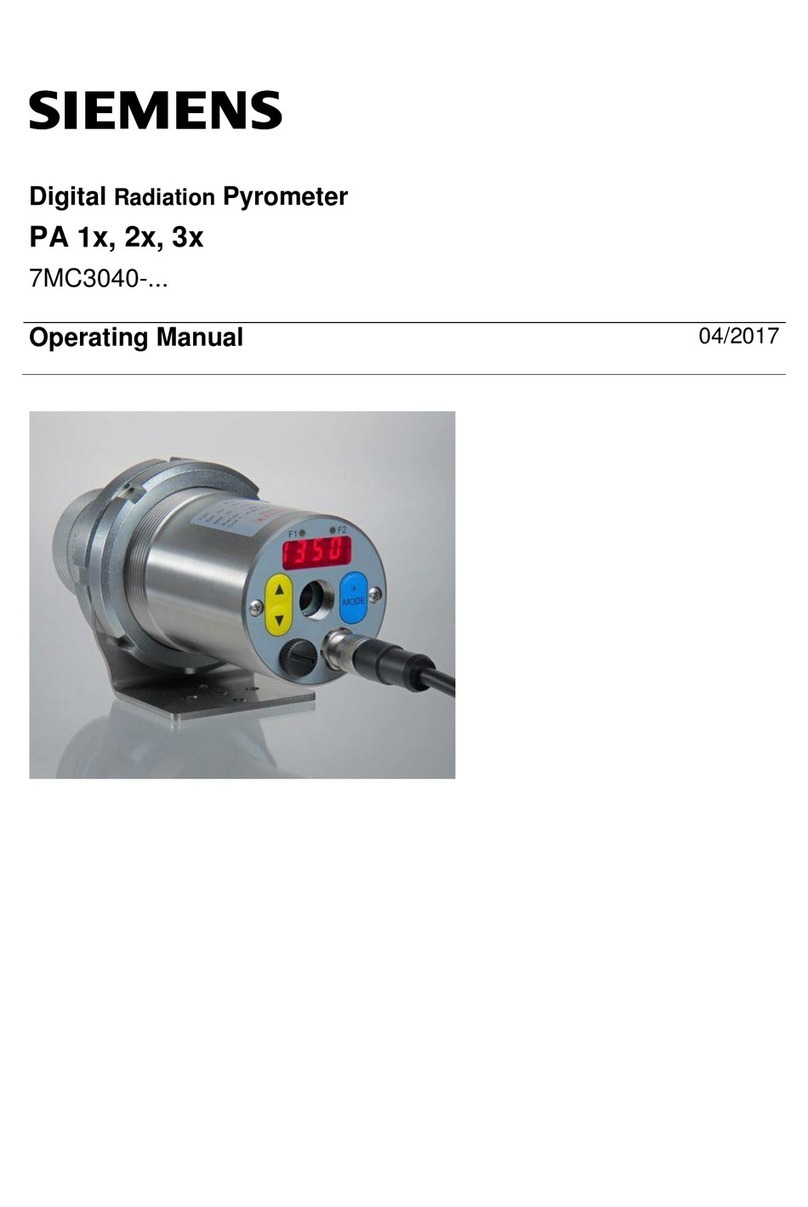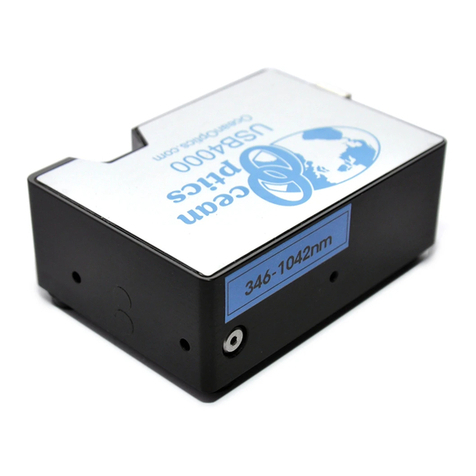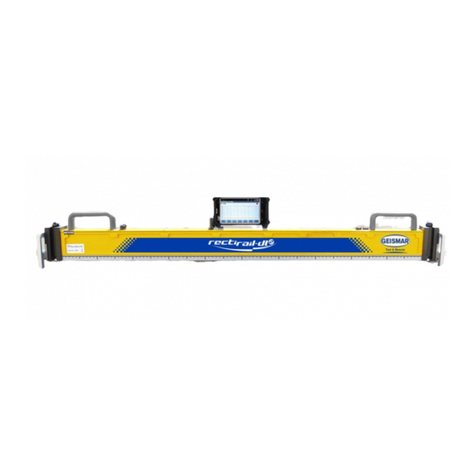MODEL502 MILLIOM&!E!VBR CIRCUIT DESCRIPTION
SECTION IV - CIRCUIT DESCRIPTION
The standard method of measuring resistance assumes that test lead re-
sistance is negligible. When measuring resistances at or below the
level of lead resistance, a more sophisticated approach is required.
The four-terminal method of resistance measurement consists of supply-
ing current from an isolated current generator to the sample, and
measuring the voltage drop across the sample with an isolated voltmeter.
The generator is made to supply constant current regardless of lead
resistance so that no errors occur due to current lead connection,
The voltmeter has large enough input resistance so that the voltage
lead resistance does not cause any error. Since there is no current
error and voltage error, the resistance is read correctly.
The 502 circuit consists of two parts, a 100 cps transistor squarewave
generator supplies the current across the sample and the AC microvolt
meter measures the voltage drop. The panel meter is calibrated directly
in ohms on a linear scale. Refer to the circuit diagram, DR 12189-C.
(1) Square W-ix Generator. The 100 cps square wave is generated by
a transistor multivibrator consisting of Ql and Q2. Rlb6 is a symmetry
control which is set at the factory to give a symmetrical square wave.
This adjustment is necessary to insure no change in reading when the
current leads are reversed. Q3 and Qk serve as a power amplifier.
Transistor Qh acts essentially as a 100 cps switch connecting and dis-
connecting El across the sample and series resistors Rl32 through
Rllr2. Due to the fact that the output peak voltage is more than 95%
of the mercury battery voltage, the change in square-wave amplitude
with change of transistor parameters is very small. B6 supplies a
small negative bias current through R151 to the output transistor to
insure good cut off characteristics, at a high ambient temperature.
(2) AC Amplifier. 'Ihe ac amplifier is a conventional vacuum tube
voltmeter with meter current feedback. The input signal is matched
to the vacuum tube input by an input transformer on the more sensitive
ranges. Above 1 ohm, the input transformer is not used.
The input voltage is compared to the feedback voltage through RlOl and
RI02 into the grid of Vl. Vl, V2, V3, Vk, and V5 amplify the error
signal. The output voltage is full-wave rectified by Dl and D2 to
supply indicating meter current. The ac current through the meter
and rectifiers flows in R128, R129 or R130 to supply feedback voltage
to the first stage. The dividers R103 and R126 or R127 allow separate
calibration of the ranges which employ transformer input and the
ranges which do not.
ON BATTERYTEST, the unit is automatically placed on the 1000 ohm
range. A 500 ohm resistor, Rlk9, is connected into the test position
and the external current and voltage leads are disconnected. Since
battery current drain is essentially the ssme on all ranges, this
test will indicate faulty batteries Immediately by giving a reading
less than normal.
0762 4-1





















